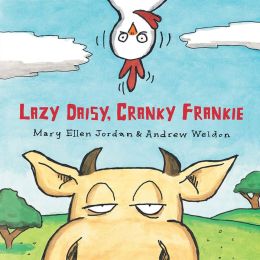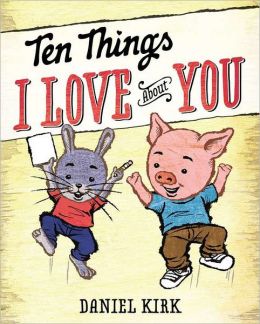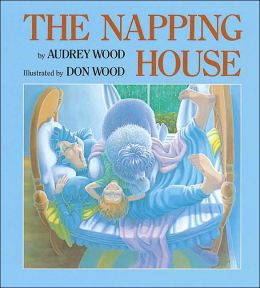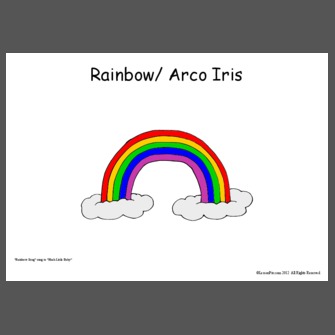In January of this last school year, my school district brought in Dr. Judy Montgomery, to talk with all the SLP's in our school district about using The Story Grammar Marker (SGM), Braidy the Story Braid, and Thememaker to meet the common core. Our school district invested some money and made sure that each school had at least one kit. My school got both the Story Grammar Marker, and Braidy the Story Braid.
Since I work primarily with preschool I've taken over our Braidy puppet, which teaches the same concepts as the Story Grammar Marker, but is cuter. An SLP from the afore mentioned facebook group asked me what books I recommend for using with the Braidy/Story Grammar Marker.
The first thing you need to address when working with SGM or Braidy is the character. In general, this is the easiest component to find in books. I like books with lots of characters to practice the concept. If you have an answering "wh" questions IEP goal, think of character as a way to practice "who."
Here are some books for the preschool population that really help with the concept of character:


Brown Bear, Brown Bear and Polar Bear, Polar Bear by Bill Martin Jr. and Eric Carle are excellent starts to learning about characters. The books are predictable and helps children work with both expressive and receptive vocabulary as well as works to increase MLU from the pesky 1 or 2 to whopping 4 ("I see a ___.") I typically use Polar Bear, Polar Bear, because many preschool teachers will already be doing a unit on Brown Bear, Brown Bear.
Good Night, Gorilla by Peggy Rathmann, is an excellent book to work on the concepts of character. The story follows the zoo keeper as he says "good night" to each of the animals in the zoo. Little does he know that the Gorilla is following him, letting everyone out of their cages to follow the Zoo Keeper to bed. The story is simple, and I work on short phrases with this book: "Good night ______".
I also work on answering both "who" and "where" questions? "Who is in the bed?" " Where is the armadillo?"

Lazy Daisy, Cranky Frankie, by Mary Ellen Jordan and Andrew Weldon is a wonderful book where none of the animals do what is expected. There are four main characters in the book, a cow, a chicken, a pig, and a dog. One of the defining characteristics of a character is the ability to do. I use this book to talk about what the characters are doing, even though the characters in this book don't do what they should. It's a very predictable book, and I work on auditory memory and problem solving by asking the children what the characters should be doing. As a bonus, the second to the last page has pictures of several animals doing unexpected activities. I like to ask the children what they see that is silly, which helps me address absurdities. I can use a simple sentence structure to work on mlu " ____ don't _____." For example "Cows don't eat Jelly."
My Friend Rabbit by Eric Rohmann is great story about the trouble Rabbit can get into while trying to solve a problem. There are few words but great pictures and lot's of characters . I work on simple prepositions with this book as well. The plane is "in" the tree. The squirrel is "on top of" the alligator, etc. We also get to practice inferencing, "What do you think is going to happen?" "How do they feel?"
My Friend Rabbit by Eric Rohmann is great story about the trouble Rabbit can get into while trying to solve a problem. There are few words but great pictures and lot's of characters . I work on simple prepositions with this book as well. The plane is "in" the tree. The squirrel is "on top of" the alligator, etc. We also get to practice inferencing, "What do you think is going to happen?" "How do they feel?"
When talking about Characters, you often need to talk about personality traits. Is the character nice, mean, funny, silly? Ten Things I Love About You, by Daniel Kirk is a great book in which the Rabbit tells Piglet all about the great things that he likes about the pig. This is a great story, that leads into talking about personality traits. With this story, I also work on some social skills, and will have the student formulate their own sentence about something they like about a classmate.
I really love The Napping House, by Audrey Wood. This is a great story with lot's of characters. But I usually introduce this book after I've been working on the Character concept for a while, because it's a great segue into working on Settings. The setting stays the same throughout the book, but it's repeated over and over. "...on the bed, in the Napping House, where everyone is sleeping." Along with characters, and introducing the concept of setting, my students will practice answering "wh" questions "who," "what," and "where." "Who is in the bed?" "Where is the ____?" "What is he or she doing?" I also target prepositions of "in" and "on."
The truth is, you can pick up just about any book for toddlers and preschoolers and work on characters.
I want to mention I usually do 4 to 5 hours per book for my preschoolers. They love repetition rely on the predictability. I find I have an easier time teaching the concepts once they are familiar with the book. When I've worked with older children, I find that I can do about 4 or 5 readings before they become bored, but I still find that familiarity of the story increases their independence in retelling the story.
For more information on the Braidy the Story Braid or the Story Grammar Marker check out http://www.mindwingconcepts.com/. You can also take a peek at Super Duper's Webber Story Builder, which is similar.
I really love The Napping House, by Audrey Wood. This is a great story with lot's of characters. But I usually introduce this book after I've been working on the Character concept for a while, because it's a great segue into working on Settings. The setting stays the same throughout the book, but it's repeated over and over. "...on the bed, in the Napping House, where everyone is sleeping." Along with characters, and introducing the concept of setting, my students will practice answering "wh" questions "who," "what," and "where." "Who is in the bed?" "Where is the ____?" "What is he or she doing?" I also target prepositions of "in" and "on."
The truth is, you can pick up just about any book for toddlers and preschoolers and work on characters.
I want to mention I usually do 4 to 5 hours per book for my preschoolers. They love repetition rely on the predictability. I find I have an easier time teaching the concepts once they are familiar with the book. When I've worked with older children, I find that I can do about 4 or 5 readings before they become bored, but I still find that familiarity of the story increases their independence in retelling the story.
For more information on the Braidy the Story Braid or the Story Grammar Marker check out http://www.mindwingconcepts.com/. You can also take a peek at Super Duper's Webber Story Builder, which is similar.










